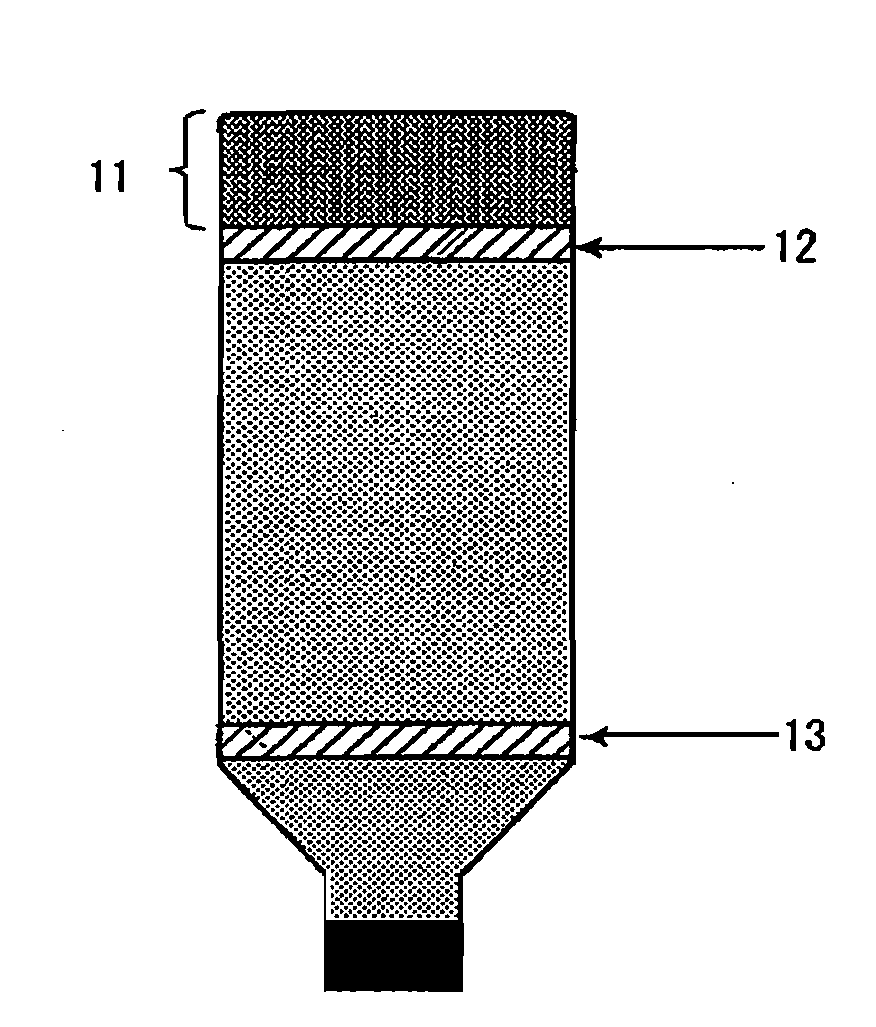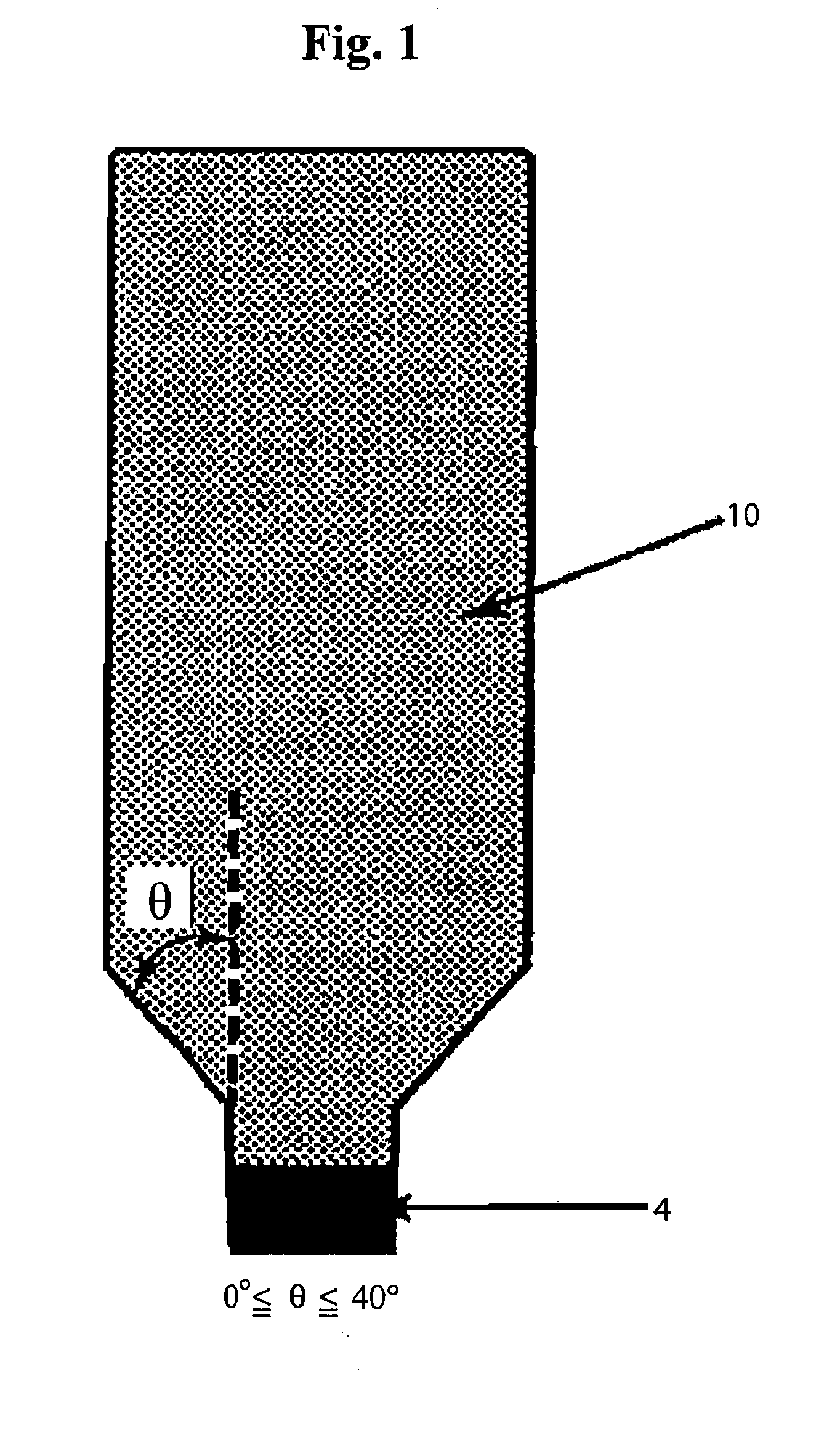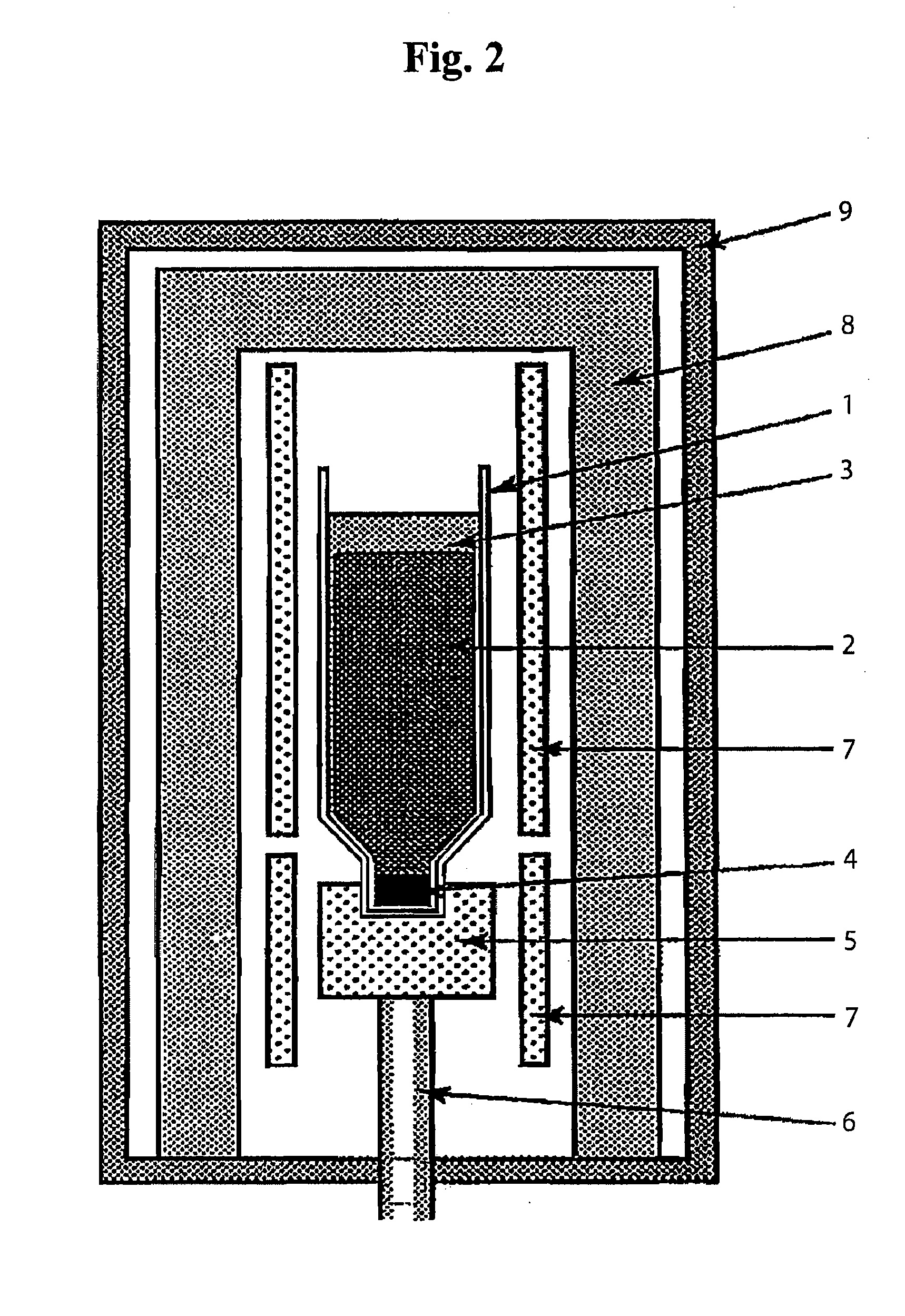Indium phosphide substrate, indium phosphide single crystal and process for producing them
a technology of indium phosphide and substrate, which is applied in the direction of non-metal conductors, conductors, polycrystalline material growth, etc., can solve the problems of high frequency of twin generation, difficult to obtain monocrystals, and difficult to achieve monocrystals, etc., to achieve adequate strength, prevent polycrystallization, and large deformation
- Summary
- Abstract
- Description
- Claims
- Application Information
AI Technical Summary
Benefits of technology
Problems solved by technology
Method used
Image
Examples
embodiment 1
[0038]An InP seed crystal of 40 mm diameter and 40 mm length is placed in a pBN crucible 1 which has an inner diameter of approximately 105 mm and which has a boron oxide (B2O3) film on the inner surface. The cross-sectional area ratio of the seed crystal with respect to the crystal body is 15%. In addition, the tapered part from the seed crystal to the crystal body has a slope angle of 40 degrees with respect to the crystal central axis. The target value for the average dislocation density of the crystal to be grown is less than 5000 cm−2, and a seed crystal with an average dislocation density of 4500 cm−2 is used. For the dopant, high purity Fe is used, and this is housed in the pBN crucible together with 10 kg of InP polycrystal and 0.5 kg of boron oxide. The weight of high purity Fe placed in the crucible is adjusted so that the concentration at the front end of the straight body section is 2×1016 cm−3.
[0039]Crystal growth is seen in FIG. 2. For the growth of InP monocrystal, a...
embodiment 2
[0044]An InP seed crystal of 75 mm diameter and 30 mm length is placed in a pBN crucible 1 which has an inner diameter of approximately 105 mm and which has a boron oxide (B2O3) film on the inner surface. The cross-sectional area ratio of the seed crystal with respect to the crystal body is 50%. In addition, the tapered part from the seed crystal to the crystal body has a slope angle of 20 degrees with respect to the crystal central axis. The target value for the average dislocation density of the crystal to be grown is less than 3000 cm−2, and a seed crystal with an average dislocation density of 2500 cm−2 is used. For the dopant, high purity Fe is used, and this is housed in the pBN crucible together with 10 kg of InP polycrystal and 0.5 kg of boron oxide. The weight of high purity Fe placed in the crucible is adjusted so that the concentration at the front end of the straight body section is 2×1016 cm−3.
[0045]For the growth of InP monocrystal, a high pressure chamber 9 made of s...
embodiment 3
[0050]An InP seed crystal of 98 mm diameter and 20 mm length is placed in a pBN crucible 1 which has an inner diameter of approximately 105 mm and which has a boron oxide (B2O3) film on the inner surface. The cross-sectional area ratio of the seed crystal with respect to the crystal body is 87%. In addition, the tapered part from the seed crystal to the crystal body has a slope angle of 10 degrees with respect to the crystal central axis. The target value for the average dislocation density of the crystal to be grown is set at less than 2000 cm−2, and a seed crystal with an average dislocation density of 1500 cm−2 is used. For the dopant, high purity Fe is used, and this is housed in the pBN crucible together with 10 kg of InP polycrystal and 0.5 kg of boron oxide. The weight of high purity Fe placed in the crucible is adjusted so that the concentration at the front end of the straight body section of the crystal is 2×1016 cm−3.
[0051]For the growth of InP monocrystal, a high pressu...
PUM
| Property | Measurement | Unit |
|---|---|---|
| diameter | aaaaa | aaaaa |
| diameter | aaaaa | aaaaa |
| diameter | aaaaa | aaaaa |
Abstract
Description
Claims
Application Information
 Login to View More
Login to View More - R&D
- Intellectual Property
- Life Sciences
- Materials
- Tech Scout
- Unparalleled Data Quality
- Higher Quality Content
- 60% Fewer Hallucinations
Browse by: Latest US Patents, China's latest patents, Technical Efficacy Thesaurus, Application Domain, Technology Topic, Popular Technical Reports.
© 2025 PatSnap. All rights reserved.Legal|Privacy policy|Modern Slavery Act Transparency Statement|Sitemap|About US| Contact US: help@patsnap.com



